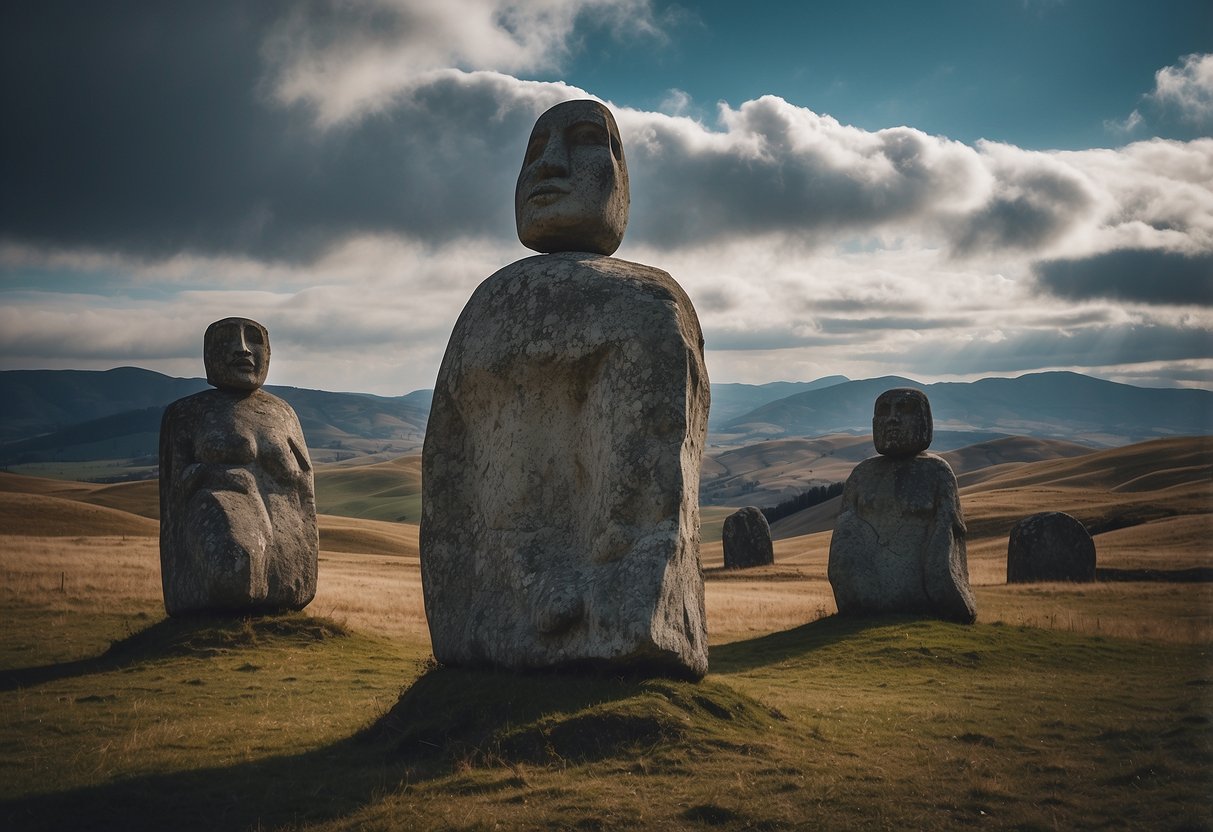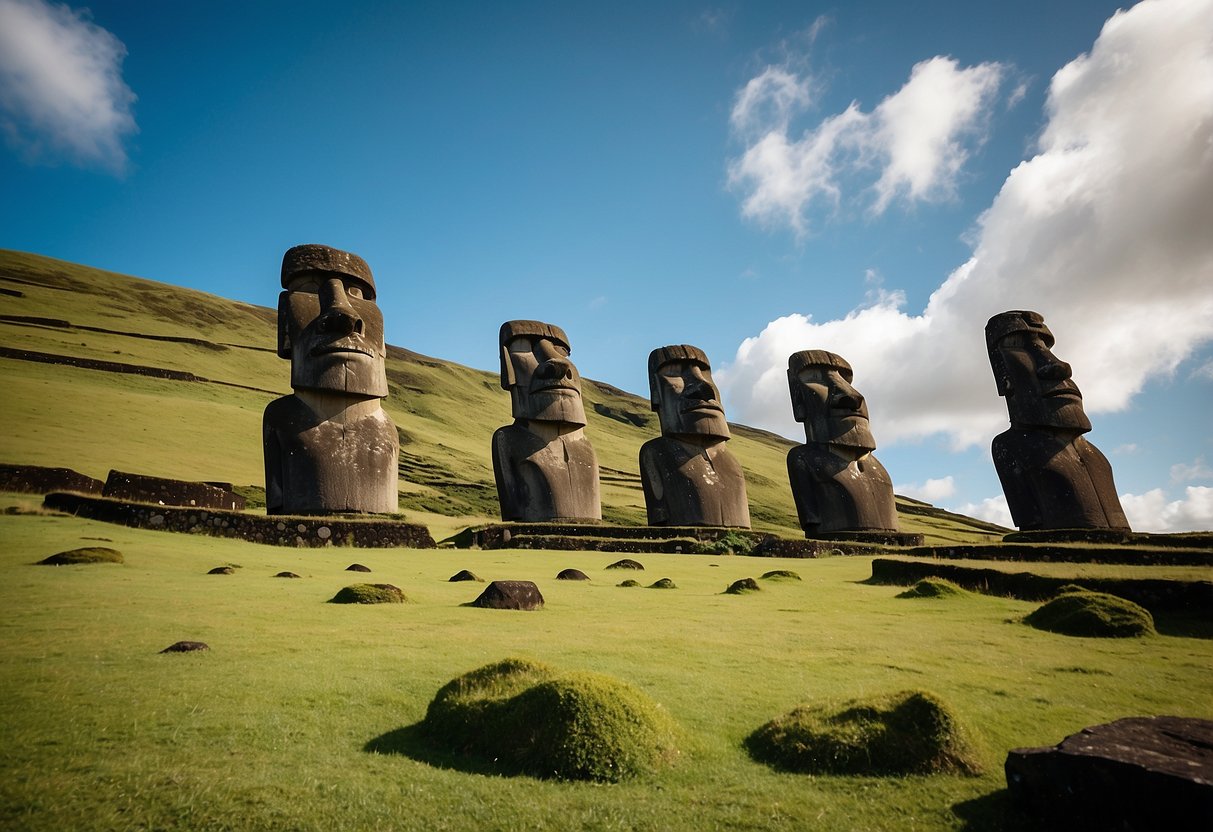
Ahu Sites and Their Significance
The Moai were placed on ceremonial platforms known as ahu. Among the most famous ahu are Ahu Tahai and Ahu Tongariki, revered for their historical and cultural significance. Ahu Tahai is one of the oldest, providing insights into early construction methods and societal structure.
Ahu Tongariki, restored after a tsunami in 1960, features 15 statues lined up majestically. This site is an iconic representation of the island’s rich heritage.
Ahu served not just as bases for Moai but also as sacred grounds for rituals and ceremonies. These sites were focal points for community gatherings and religious activities, highlighting their importance in the spiritual life of Easter Island’s inhabitants.
Rapa Nui National Park

Rapa Nui National Park is a UNESCO World Heritage Site renowned for its archeological significance and stunning landscapes.
Orongo and Rano Kau
Orongo, situated on the southwestern tip of Easter Island, holds deep cultural importance. This ancient ceremonial village, perched on the edge of the Rano Kau volcano, was the center of the birdman cult. Visitors see restored stone houses and breathtaking views of the Pacific.
Rano Kau, the dormant volcano, offers a unique natural wonder. Its crater contains a freshwater lake dotted with islands of reeds. The steep trails leading to the summit provide panoramic vistas, with the caldera making a striking contrast to the surrounding ocean.
Historic Petroglyphs
Petroglyphs are key archaeological features in Rapa Nui National Park. Hundreds of carved stones depict various motifs, including birds, fish, and anthropomorphic figures. These carvings, some related to the birdman cult, reveal much about the island’s ancient society.
Sites like Papa Vaka and Poike showcase these intricate carvings. Scholars believe the petroglyphs served various purposes, from religious to navigational. Uncovering their meanings offers invaluable insights into Rapa Nui’s prehistoric culture.
Planning Your Trip
When planning a trip to Easter Island, consider the best time to visit, accommodation options, and how to navigate the island once you arrive. Being well-prepared will ensure a smooth and enjoyable experience.
Best Time to Visit
The ideal time to visit Easter Island is during the shoulder seasons, which are from April to June and October to December. During these periods, the weather is pleasant, and there are fewer tourists. February is also a good month to consider if you want to experience the Tapati Rapa Nui festival, a vibrant cultural event.
Avoid the peak season, which is from late December to early February, as prices for accommodation and flights can be significantly higher. The island’s subtropical climate means it can be humid and warm year-round, but rainfall is distributed fairly evenly, so bring appropriate clothing.
Accommodation and Cost Considerations
Accommodation options on Easter Island range from luxury hotels to budget-friendly guesthouses. The majority of lodging is concentrated in Hanga Roa, the island’s only town. Booking in advance is highly recommended, especially during high season and festival times.
Costs can be high due to the island’s remote location. Expect to pay more for food, goods, and services than on the mainland. Budget travelers should plan carefully and might consider staying in guesthouses with kitchen facilities to prepare some meals. It’s also wise to bring some essentials like medicines and toiletries due to limited availability.
Navigating Island Transport
Upon arrival at Mataveri International Airport, travelers have several options for getting around Easter Island. Renting a car is a popular choice, providing flexibility to explore the island’s many archaeological sites at your own pace. Several car rental agencies are available, and booking in advance can secure better rates.
Scooters and bicycles are also available for hire and are a good choice for those looking to get some exercise while sightseeing. Taxis and guided tours are additional options for those who prefer not to drive. The island has limited public transportation, so planning your mode of transport ahead of time is advisable. This will help ensure you can visit all the key attractions without hassle.